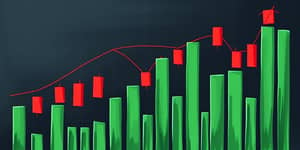
Inflation touches every corner of the economy, from grocery aisles to global capital flows. Grasping its market impact empowers investors and policymakers to respond intelligently, protect wealth, and seize emerging opportunities.
At its core, inflation is a sustained increase in the general price level of goods and services over time, causing each dollar to buy less. The Federal Reserve aims for a 2% annual target, but as of May 2025, the Consumer Price Index (CPI) stood at 2.4% year-over-year, with core CPI at 2.8%. Meanwhile, the Fed’s preferred Core Personal Consumption Expenditures (PCE) index measured 2.9% in January 2025.
These metrics matter because households and businesses gauge spending, saving, and investment decisions based on expected future prices. Unchecked inflation can erode real wages and destabilize financial markets, while deflation or disinflation can stall growth and deepen downturns.
Inflation’s reach extends far beyond just higher grocery bills. It influences policy, output, and living standards in profound ways.
When inflation outpaces wage growth, households sacrifice discretionary spending and increase debt burdens. For policymakers, the challenge is steering between an overheated economy and a growth-starved contraction.
Inflation reshapes market relationships, creating new correlations and disrupting traditional safe havens.
Rising consumer prices typically force bond yields upward, pushing bond prices lower. The historical inverse relationship between stocks and bonds can flip when inflation spikes, making simultaneous portfolio losses more likely.
Equities react to inflation through the present-value channel: higher discount rates cut the value of future earnings, often leading to lower stock valuations. However, particular sectors that benefit from pricing power or supply shocks may outperform, as seen during recent tariff-driven volatility.
Not all assets respond equally when prices rise. Understanding sector-specific forces helps allocate capital wisely.
Businesses facing higher input costs may pass them to consumers, but competitive pressures can limit their pricing power, compressing profit margins in some industries while boosting others.
Investors and savers can take proactive steps to mitigate inflation’s bite and capture potential upside.
Regularly rebalance portfolios to stay aligned with changing risk profiles and market valuations. Stay informed on policy announcements, inflation reports, and central bank commentary to anticipate rate moves.
Market participants are positioning for a complex 2025 landscape, marked by persistent inflationary forces and evolving policy responses.
Consensus forecasts suggest the federal funds rate may peak near 3.0% by late 2025, as the Fed aims to tame price growth without tipping the economy into recession. However, high government spending and widening deficits risk adding inflationary pressure and could crowd out private investment.
Global capital flows may shift if foreign investors grow wary of U.S. debt levels, affecting dollar strength and bond demand. Meanwhile, sudden policy shifts—especially related to trade tariffs—remain a wildcard for market volatility.
Inflation’s ripple through markets is neither uniform nor predictable, but understanding its mechanisms equips investors and policymakers to adapt. By diversifying into inflation-hedged assets, monitoring policy signals, and maintaining flexibility, you can protect purchasing power and capitalize on shifting opportunities.
In a world of rising prices and policy pivots, staying informed and agile is the strongest defense. Embrace disciplined strategies, and you’ll navigate inflation’s tides with confidence and clarity.
References













